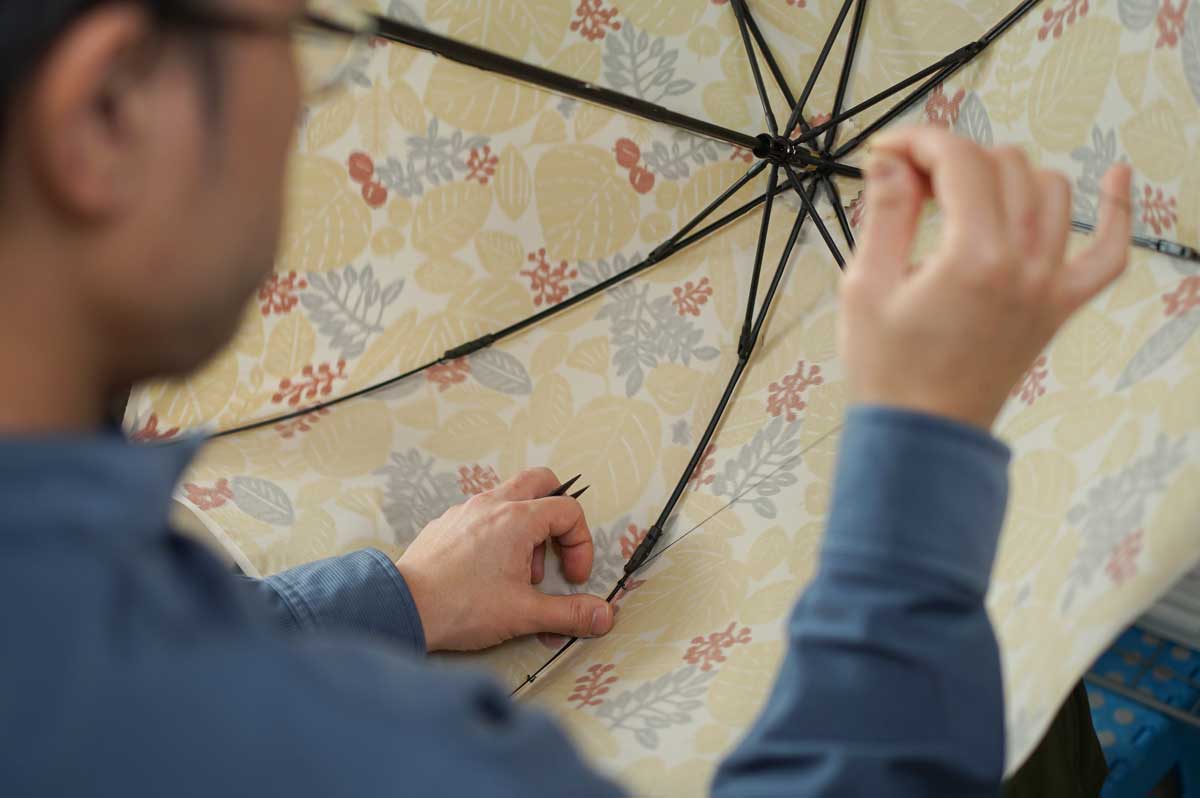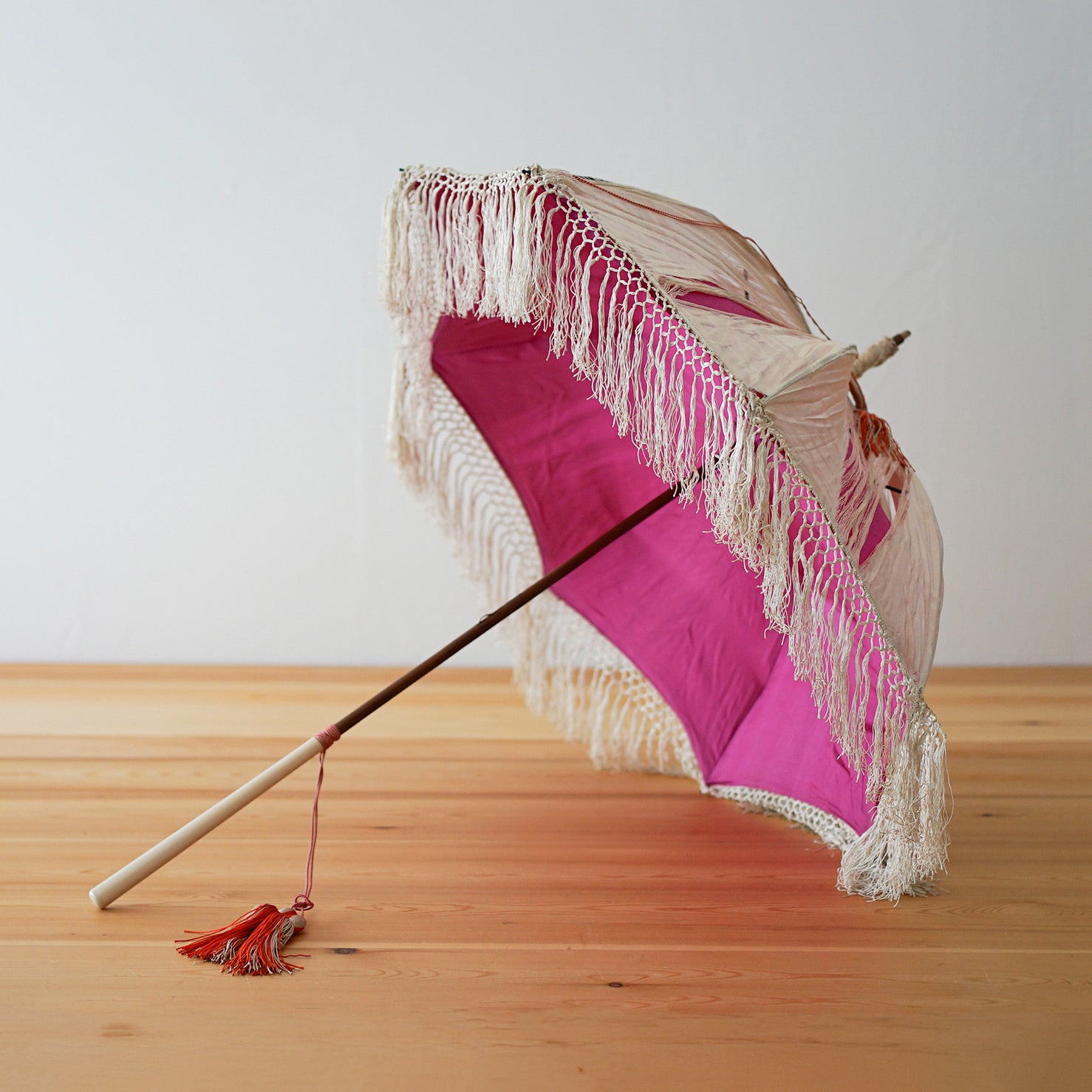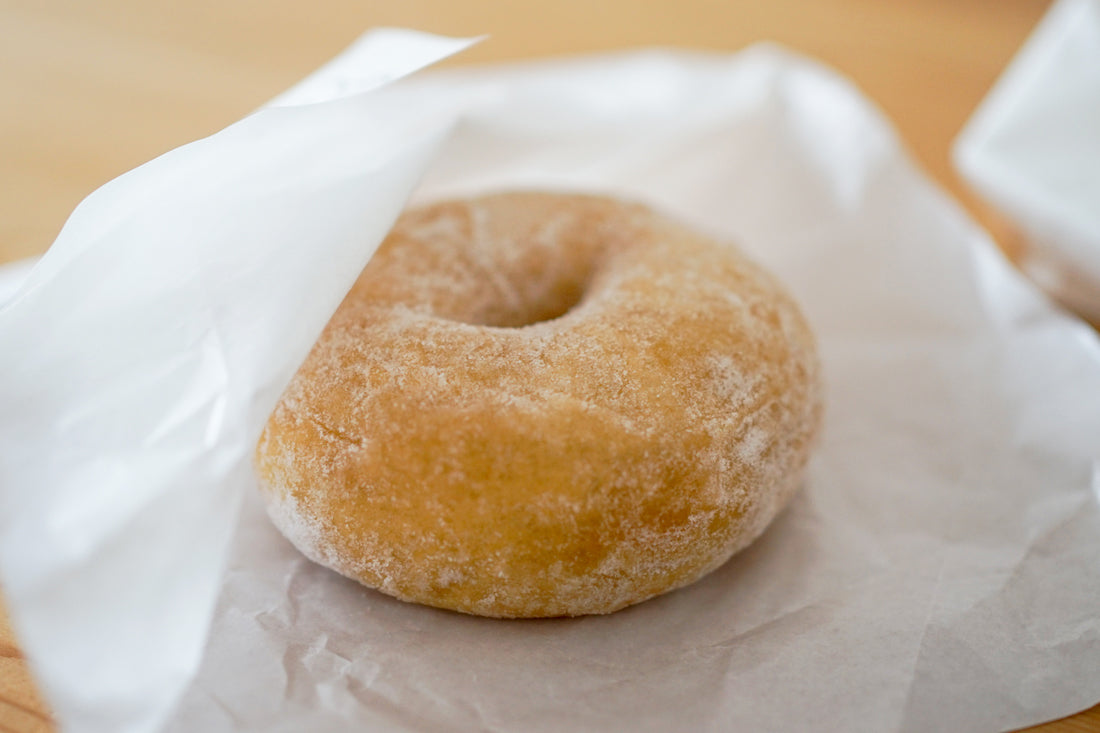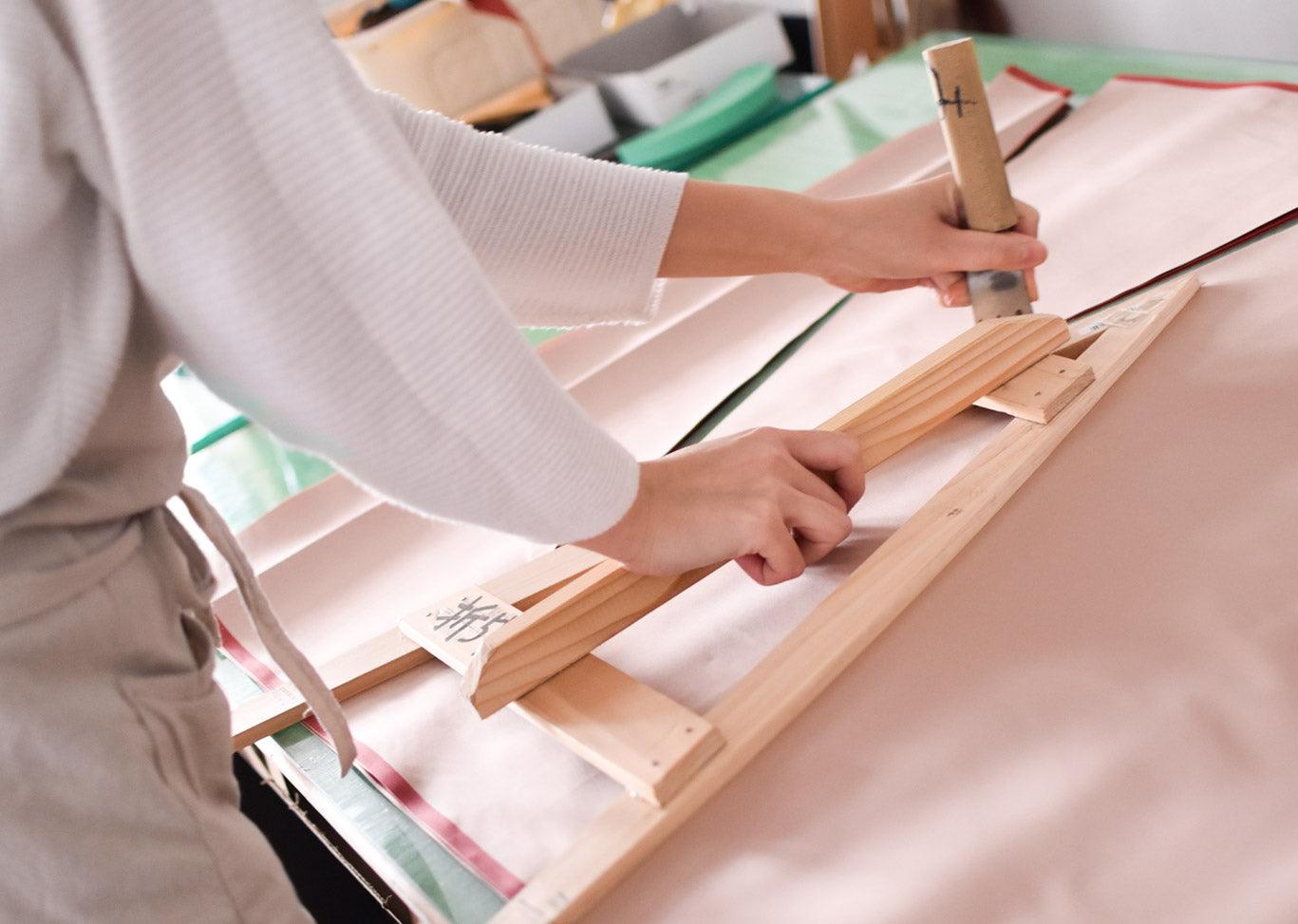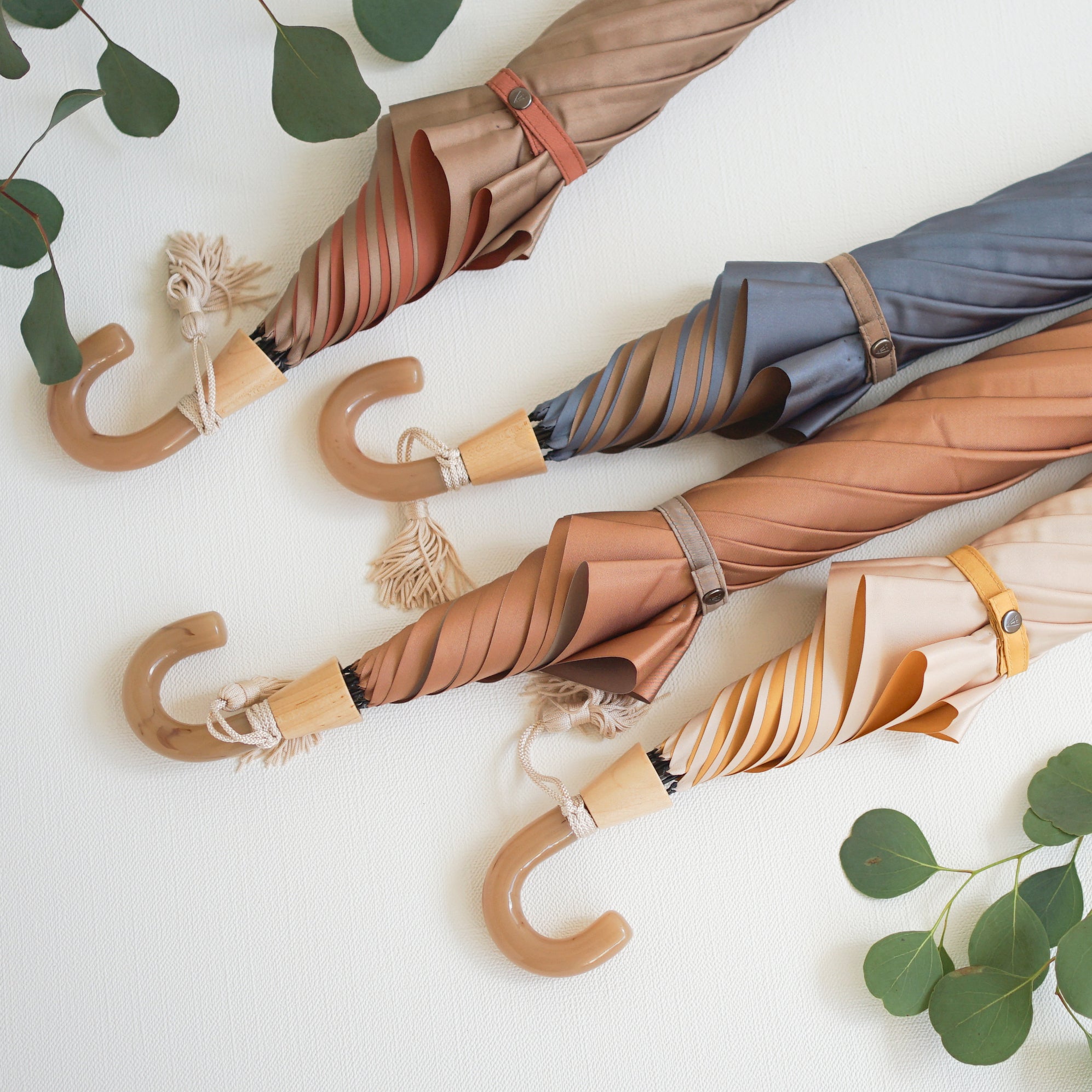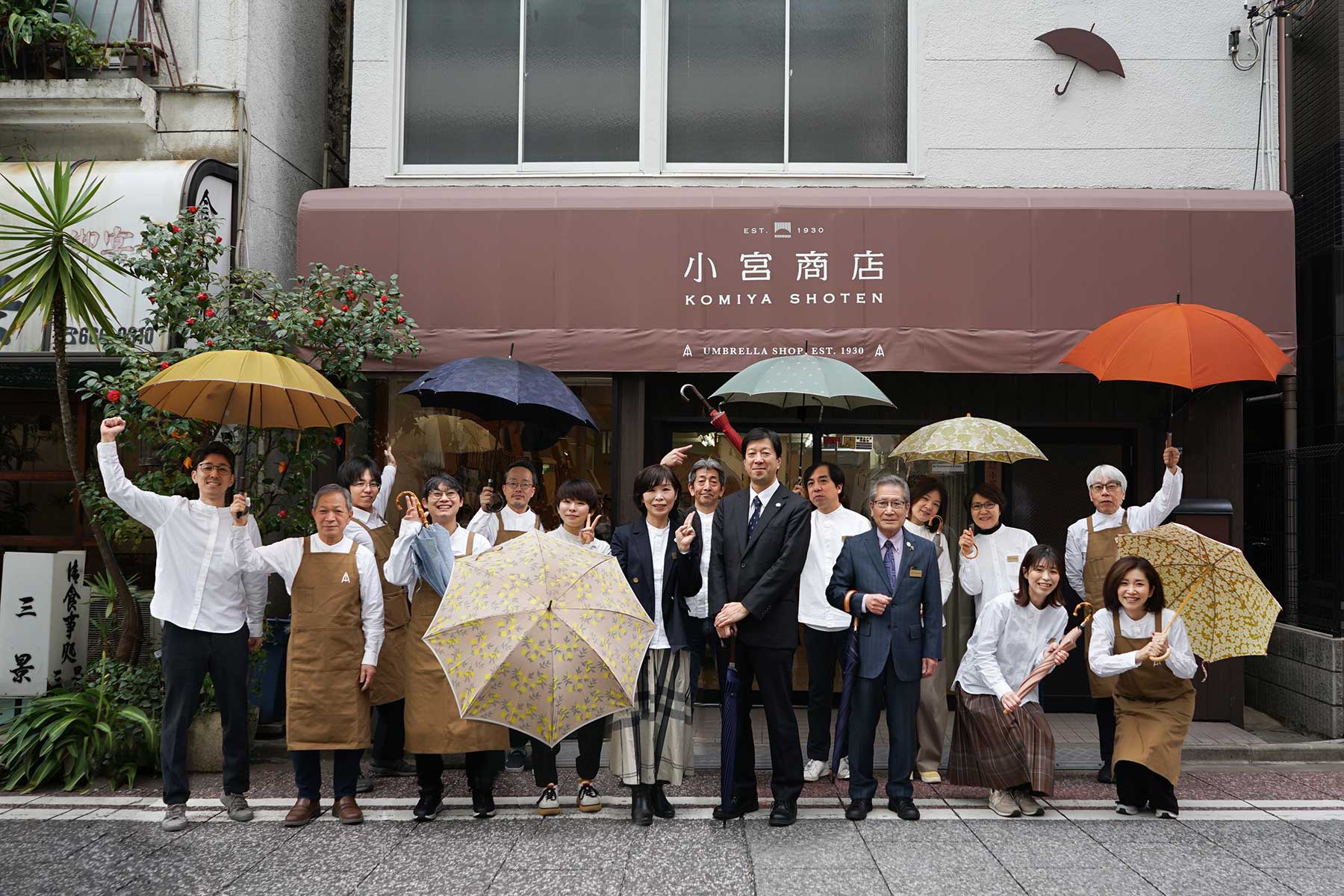This is Kato.
The season of refreshing spring breezes has arrived, and the weather is gradually becoming more comfortable.
Thankfully, Komiya Shoten has been receiving more and more interview requests, and among those requests we receive many questions about "rain umbrellas" and, more recently, about "parasols" and "umbrellas for all weather" due to the season.
I often talk about the history and traditional crafts of Western-style umbrellas, so this time I'd like to take a break from introducing umbrella parts and introduce the "Rokumei Ombre", made by the craftsmen at Komiya Shoten, while also incorporating the history of Western-style umbrellas.

Japanese people first encountered Western-style umbrellas in 1854 (the first year of the Ansei era) during the late Edo period.
It dates back to the time when American Commodore Perry landed off the coast of Uraga in his black ships to open the country and conclude the Treaty of Peace and Amity.
For more information on the history of Western umbrellas, please see the following page.
The history of Western umbrellas
Western umbrellas, which were introduced from the West, originally started out as umbrellas made of iron frames covered with silk or cotton fabric.
The first parasol was made in Japan in 1872.
At the time, umbrellas were luxury items that only the wealthy could afford to own.
During the Taisho period, the country was greatly influenced by Western culture, and parasols gradually became popular as a fashionable item.

It was during the Taisho period that parasols for men made from a plain weave fabric called "kenchu" first appeared.
A linen jacket, hat, and silk parasol were the defining features of male dandyism at the time.
In the 1950s, inspired by the vinyl material brought in by the occupying forces, "vinyl umbrella covers" were made, which were made by covering silk or cotton umbrellas with vinyl to protect them from the rain, and this marked the beginning of the vinyl umbrella.
Folding umbrellas also appeared in Japan in the 1940s.
This product was developed based on the folding umbrella invented by the German company Knirpuss in 1928.
Currently, Western-style umbrellas manufactured in Japan have undergone improvements in materials, with the frame having changed from steel to fiberglass or carbon fiber, and polyester is now the mainstream fabric for rain umbrellas, with some even using highly water-repellent, high-density fibers.
In addition, the fabric of the umbrella is treated with a water-repellent coating on the front and a water-resistant coating on the back, and there is an increase in "umbrellas that can be used in both rain and shine (dual-purpose umbrellas)" that are also treated to block ultraviolet rays during the processing.
As you can see, Western-style umbrellas have a long history, and it is clear how much effort it takes to make a genuine Japanese-made Western-style umbrella.
Last year, as a new venture, Komiya Shoten completed a reproduction of the Japanese-made Western parasol "Rokumei Ombre," which was used as a luxury accessory during the Rokumeikan period in the early Meiji period.
Using the few existing documents as a basis, we began by searching for materials, then went through a process of trial and error with the fine embroidery, parts, and the shape and curve of the umbrella, which took several years to complete.
The outer fabric is pure silk twill, and on the inside, silk satin fabric is layered in a way that sandwiches the bones.
Even the braided cord decorations on the handles have been meticulously reproduced by hand by modern artisans.
The item is currently on display and for sale at our Higashi-Nihonbashi shop, so if you're interested, please come and see it.

Rokumeikan Ombrell Limited release of 4 items ¥880,000 including tax


